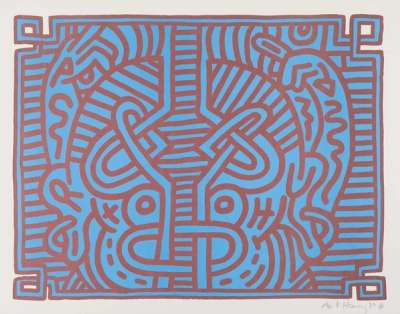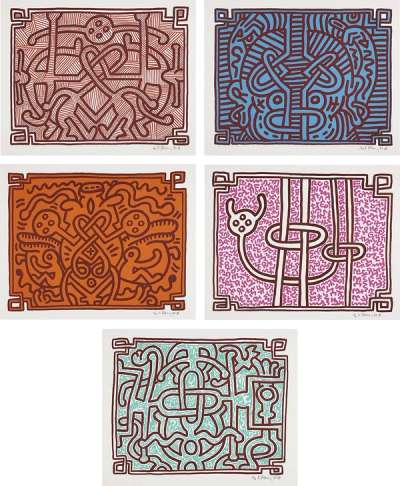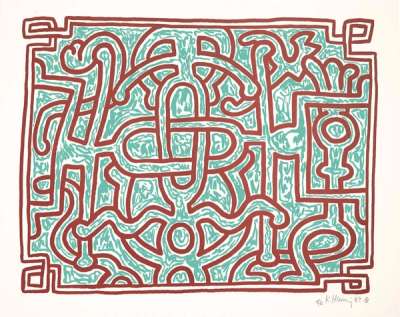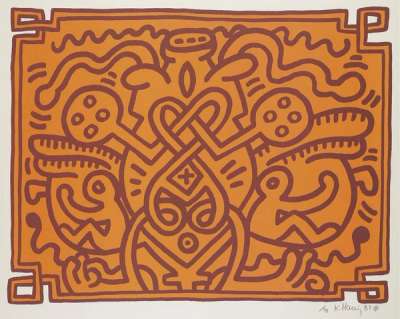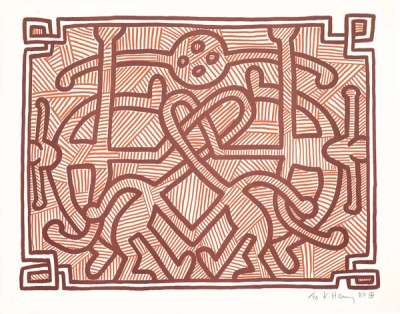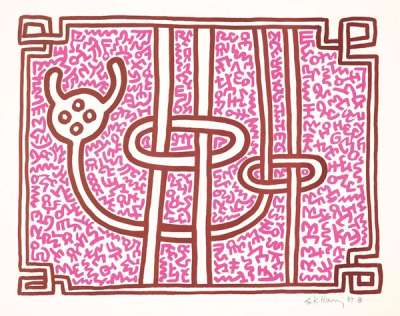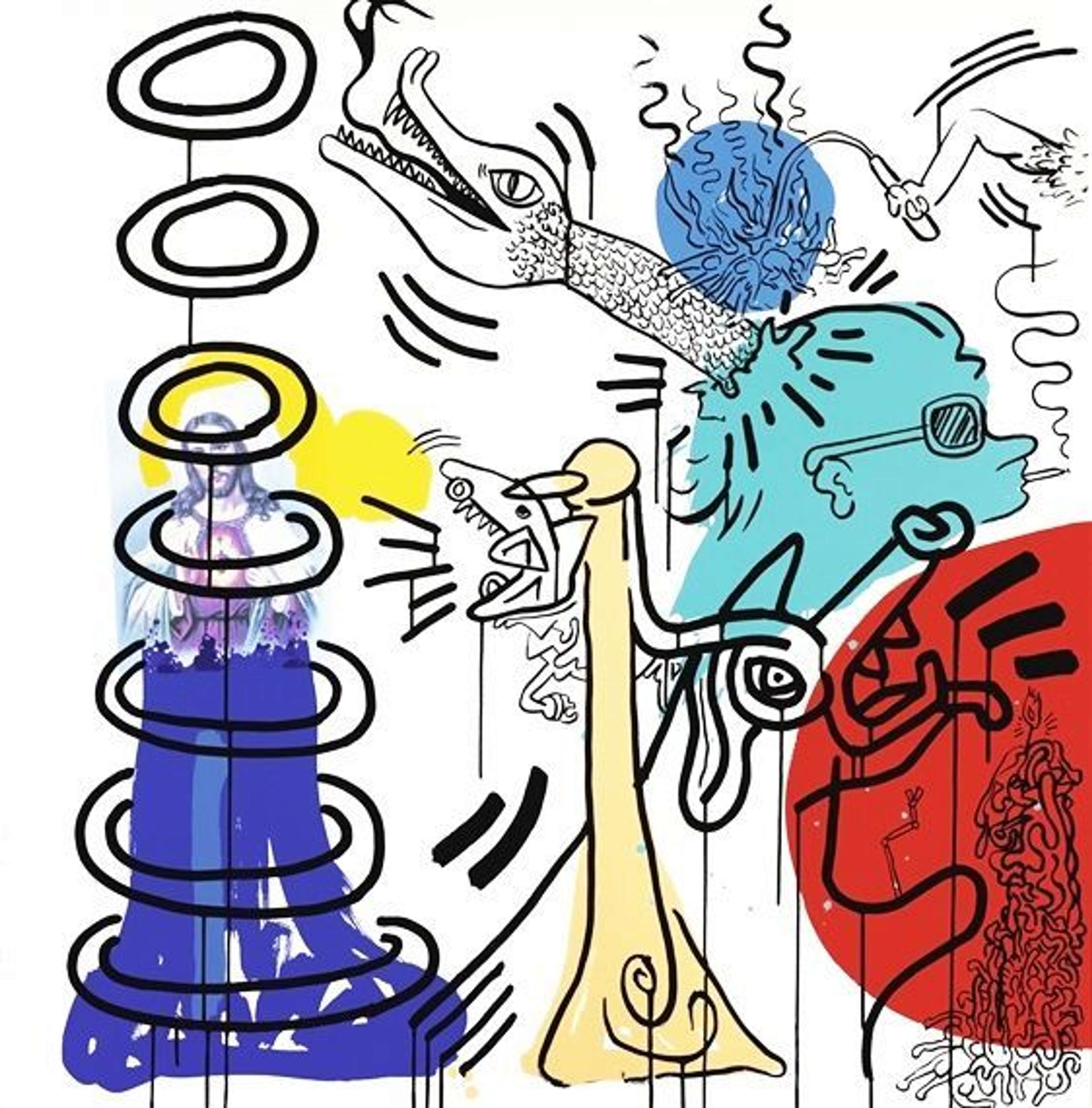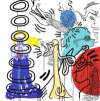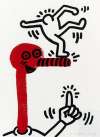Chocolate
Buddha
Keith Haring's 1989 Chocolate Buddha series draws on global ancient arts, such as Eastern Mandalas and Australian Aboriginal art, for its symmetrical patterns and continuous flow of line and energy.
Keith Haring Chocolate Buddha For sale
Chocolate Buddha Value (5 Years)
Works from the Chocolate Buddha series by Keith Haring have a strong market value presence, with 59 auction appearances. Top performing works have achieved standout auction results, with peak hammer prices of £69506. Over the past 12 months, average values across the series have ranged from £7782 to £38526. The series shows an average annual growth rate of 1.14%.
Chocolate Buddha Market value
Auction Results
| Artwork | Auction Date | Auction House | Return to Seller | Hammer Price | Buyer Paid |
|---|---|---|---|---|---|
 Chocolate Buddha 4 Keith Haring Signed Print | 17 Jul 2025 | Mallet Japan | £6,800 | £8,000 | £9,000 |
 Chocolate Buddha (complete set) Keith Haring Signed Print | 25 Oct 2024 | Christie's New York | £29,750 | £35,000 | £50,000 |
 Chocolate Buddha 2 Keith Haring Signed Print | 27 Sept 2022 | Bonhams Los Angeles | £2,508 | £2,950 | £3,800 |
 Chocolate Buddha 5 Keith Haring Signed Print | 27 Sept 2022 | Bonhams Los Angeles | £10,200 | £12,000 | £15,000 |
 Chocolate Buddha 3 Keith Haring Signed Print | 27 Sept 2022 | Bonhams Los Angeles | £8,500 | £10,000 | £13,000 |
 Chocolate Buddha 1 Keith Haring Signed Print | 27 Sept 2022 | Bonhams Los Angeles | £10,200 | £12,000 | £15,000 |
Sell Your Art
with Us
with Us
Join Our Network of Collectors. Buy, Sell and Track Demand
Meaning & Analysis
Haring’s bold 1989 Chocolate Buddha series creates complex, symmetrical patterns through the interlocking of limbs, creatures and objects. Chocolate Buddha 3 is the only print in the series that is not symmetrical in composition.
Completed the year before Haring’s death, this series amalgamates the artist’s clear-line figurative style with more complex and integrated compositions to form a series of highly abstracted images. Recalling styles of the ancient world such as Eastern Mandalas and Australian Aboriginal art, the Chocolate Buddha series also shows influence from the European Modernists such as Miro, Klee and Matisse. This is notable from the way in which the prints focus on flat, richly coloured shapes and patterns that play out across the image surface.
Striking a balance between figuration and abstracting, Haring’s Chocolate Buddha series has a kinetic energy, produced through his use of jarring colours and complex patterns. The series has a compulsive quality that fills out across each print in the series that injects the static images with a sense of movement. Furthermore, there is an electric flow of line that is satisfying for the viewer to follow, emphasised by each print’s symmetrical composition. By limiting himself to the use of two tones in each print, and by using his trademark, bold, thick lines, this set of prints maintain the eye-catching simplicity that Haring is so famous for.
Haring’s Chocolate Buddha series is produced through the medium of lithography, a printing process that utilises a slab of stone or metal to apply ink that then repels the pigment onto fibrous material like paper. Unlike Haring’s more commercial screen printing method, this printing process dates back to the 18th century and has the capacity to produce exceptional detail across hundreds of multiples. Haring’s use of lithography as a method of printing worked to maintain the crisp edges and opaque sections of colour that make up his signature style.
